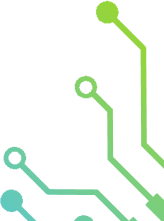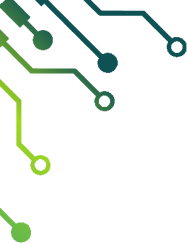As the world faces pressing environmental challenges, the need for a workforce equipped to navigate both the digital and green transitions has never been clearer. The European Union’s Green Deal, with its ambitious sustainability goals, calls for significant changes across various sectors like agriculture, energy, transport, and water management. Central to achieving these goals is the integration of Artificial Intelligence (AI) – a powerful tool that can drive sustainable practices, optimise resource usage, and reduce environmental impact.
However, despite the vast potential of AI, there remains a significant gap in the workforce when it comes to the necessary digital skills required to tackle these sustainability challenges. Vocational education and training (VET) systems are struggling to keep pace with this rapidly evolving landscape. How do we ensure that future professionals have the skills to apply AI in ways that benefit both their industries and the planet?
The AI and Sustainability Skills Gap
AI is transforming industries, but its application in sustainability is still in its early stages. According to a report by PwC, AI could reduce greenhouse gas emissions by up to 160 million tonnes of CO₂ in agriculture alone by 2030. Yet, as the Digital Economy and Society Index (DESI) 2022 highlights, there is a notable gap in AI adoption, especially in VET systems, across EU businesses. Many VET educators are eager to integrate AI into their teaching but lack the resources, training, and confidence to do so effectively. In turn, this leaves students inadequately prepared for the digital and green skills that the job market increasingly demands.
This skills gap is not just a matter of technological advancement; it is one of sustainability. Industries like agriculture and transport urgently need professionals who understand both AI and sustainability in equal measure. AI can play a critical role in driving sustainability across sectors – from precision farming that optimises water use to smart grids that reduce energy waste – but it requires a workforce that can apply these technologies with an understanding of environmental impact.
The Urgency of Integrating AI and Sustainability into VET
SUSTaiN is a response to this growing need for AI-focused sustainability education in VET. By integrating AI into vocational training, we aim to equip educators and students with the knowledge and skills necessary to address the environmental challenges ahead. But why exactly is this integration so crucial?
- Technological Innovation and Sustainability
AI has the potential to revolutionise industries by making them more efficient and sustainable. For instance, in agriculture, AI-driven systems can predict crop yields, monitor soil health, and optimise water usage, thus reducing resource waste. In transport, AI can enable smart traffic management systems that reduce emissions. To leverage this potential, VET educators need the tools, knowledge, and confidence to teach these applications effectively. - Preparing for a Digital-First Workforce
As industries become more digital, there is an increasing demand for workers with AI skills. The World Economic Forum’s “Future of Jobs” report highlights that by 2025, 85 million jobs could be displaced due to technological shifts, but 97 million new roles will emerge, requiring advanced digital skills. Vocational education must adapt quickly to these changes to ensure that students are prepared for these new roles – and that includes AI literacy. - Responding to Policy Demands
The European Union has placed a strong emphasis on both digital transformation and sustainability. The Digital Education Action Plan calls for the widespread integration of digital skills in education to keep up with the evolving labour market. At the same time, the EU’s Green Deal aims to make Europe the world’s first climate-neutral continent by 2050. The SUSTaiN project aligns with these ambitious goals by ensuring that VET systems equip students with the skills needed to contribute to these initiatives.
Why SUSTaiN Matters
At its core, SUSTaiN aims to address the gap between technological progress and sustainable education by empowering VET educators and students. Through initiatives like the AI Training Program for VET, AI for Sustainability Hackathons, and a Compendium of Case Studies and Starterpack, we are developing practical resources that show how AI can be applied in agriculture, transport, energy, and water management to foster sustainability.
The project’s approach is grounded in research and insights from across Europe. A needs analysis conducted within our networks revealed that 95% of VET students recognise the importance of AI for their future careers, yet 79% reported a lack of access to AI training within their courses. This discrepancy reinforces the urgent need for educational initiatives like SUSTaiN, which directly respond to these concerns.
The Path Forward
SUSTaiN isn’t just about training individuals in AI; it’s about preparing the next generation of workers to apply their skills in ways that align with the pressing need for sustainability. By equipping VET educators with the tools to teach AI alongside sustainability practices, we are laying the foundation for a workforce capable of addressing some of the world’s most urgent challenges.
The integration of AI into VET systems is a transformative step forward. It enables educators to prepare students not just for today’s job market but for the future, where technology and sustainability go hand in hand. With partners from across Europe, SUSTaiN is ensuring that AI becomes a key driver of both economic growth and environmental stewardship, shaping a future where digital transformation and sustainability are inextricably linked.
By fostering collaboration, innovation, and practical learning, SUSTaiN aims to bridge the gap between the present and the future, ensuring that the workforce of tomorrow is ready to meet the challenges of a sustainable and AI-driven world.
Written by Kathryn O’Brien, EUEI



